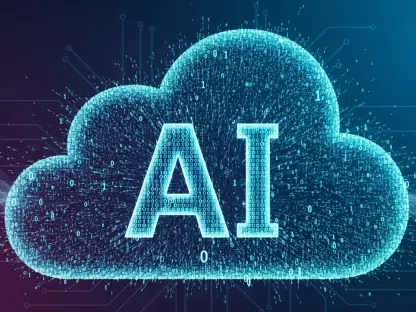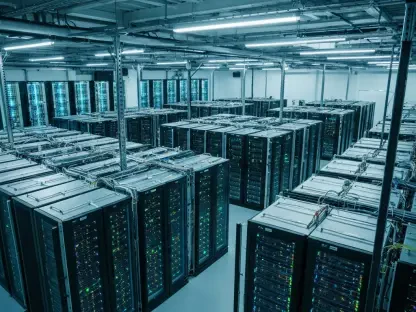Picture a scenario where a developer can dive into an entire sprawling codebase without the constant frustration of switching between files or losing critical context—a dream that seemed out of reach until now, when on November 14, this vision became reality with Anthropic’s launch of Claude 4.2, an AI model equipped with a staggering 1 million token context window. This innovation promises to transform software development by enabling coders to process massive repositories, equivalent to over 75,000 lines of code, in just one interaction. It’s a monumental step forward for solo programmers and enterprise teams alike, tackling one of the most persistent challenges in coding: managing complexity at scale. Early reactions from the tech community hint at a seismic shift, with many already speculating on how this tool could redefine productivity. As the industry buzz grows, it’s clear that this release isn’t just an upgrade—it’s a potential game-changer for how code is written, debugged, and optimized in modern workflows.
Redefining Scale with a Massive Context Window
The defining feature of Claude 4.2 lies in its unprecedented 1 million token context window, a capability that allows the AI to ingest and analyze enormous volumes of code or hundreds of documents within a single prompt. This addresses a critical bottleneck in software development where developers often grapple with fragmented information across multiple files. Now, entire repositories can be processed holistically, ensuring that intricate dependencies and overarching structures remain in focus. This advancement, built upon Anthropic’s progressive scaling of token limits in prior models, marks a significant leap in reducing the cognitive load on coders. The result is a smoother, more intuitive experience when tackling large-scale projects, setting a benchmark that could push the boundaries of what AI-assisted coding can achieve in terms of depth and efficiency.
Equally impressive is the impact of this context window on day-to-day tasks like debugging and code optimization. With the ability to maintain a comprehensive view of a codebase, Claude 4.2 empowers developers to spot issues, suggest enhancements, and navigate complex relationships between files without the need for constant manual cross-referencing. Reports indicate that context-switching—a notorious time sink—has been slashed by up to 50% compared to earlier tools. This efficiency gain translates directly into faster project timelines and less frustration for teams working under tight deadlines. For industries reliant on rapid software iterations, this feature alone positions the model as a vital asset, promising not just incremental improvements but a fundamental rethinking of workflow dynamics in coding environments.
Enhancing Productivity through Tool Integration
Beyond its sheer capacity, Claude 4.2 introduces a sophisticated tool-use framework that elevates its utility for practical coding tasks. Expanded through the Claude Code research preview for web and iOS applications, this functionality enables seamless interaction with external tools for activities such as repository ingestion, bug fixing, and automated test writing. Specifically designed to cater to Team and Enterprise users, it supports the management of multiple repositories simultaneously, a boon for those juggling complex, interconnected projects. This integration streamlines real-time analysis and fosters a more cohesive development process, making it easier to address issues as they arise. The early feedback from users highlights how these capabilities are already simplifying workflows that once required cumbersome manual intervention.
Another dimension of this tool integration is the boost it provides to productivity across diverse development scenarios. For instance, coders can now leverage Claude 4.2 to generate tests or refine code snippets while maintaining context across vast datasets, a task that previously demanded significant time and effort. This adaptability makes the model particularly valuable for enterprise settings where teams often handle sprawling systems with numerous dependencies. By bridging the gap between raw AI power and actionable tools, Anthropic has crafted a solution that doesn’t just process information but actively contributes to solving real-world coding challenges. As adoption grows, this feature is likely to become a cornerstone for organizations aiming to maximize efficiency without sacrificing the quality or accuracy of their software outputs.
Safeguarding Integrity with Robust Security Measures
Security remains a paramount concern in AI-driven development, and Claude 4.2 tackles this head-on with carefully designed protective mechanisms. Anthropic has implemented sandboxing and isolated cloud environments to minimize risks during AI-powered coding sessions, ensuring that sensitive data isn’t exposed to potential threats. These measures are crucial for maintaining integrity when processing large codebases, where vulnerabilities could otherwise be exploited. By prioritizing such safeguards, the model addresses widespread apprehensions about the safety of integrating AI into critical workflows. This commitment to secure operations builds trust among users, particularly in industries where data breaches or malicious use could have severe repercussions.
Moreover, the focus on security extends to mitigating broader ethical risks associated with large-context AI models. Claude 4.2 incorporates features aimed at preventing unauthorized access and ensuring that outputs remain reliable, reducing the likelihood of errors or unintended consequences in code generation. This approach reflects a broader dedication to responsible AI development, balancing innovation with the need to protect users and their intellectual property. For enterprises adopting this technology, these precautions provide reassurance that their adoption of cutting-edge tools won’t come at the cost of compromised safety. As AI continues to permeate software engineering, such measures will likely set a standard for how future models handle the delicate interplay between power and accountability.
Unlocking Economic Advantages for Coding Teams
One of the standout benefits of Claude 4.2 is its remarkable cost-effectiveness, making advanced AI tools accessible to a wider range of developers. Real-world case studies demonstrate this vividly, with examples like the transformation of 58,000 lines of code for a mere $42 showcasing how even small teams can undertake substantial projects without prohibitive expenses. This affordability breaks down barriers that have historically limited access to high-end development resources, enabling startups and independent coders to compete on a more level playing field. The economic implications are profound, as this democratization of technology fosters innovation across the board, regardless of budget constraints.
Additionally, the financial advantages of Claude 4.2 extend beyond upfront costs to long-term savings in time and resources. By automating complex tasks and reducing the need for extensive manual oversight, the model cuts down on labor-intensive processes that often inflate project budgets. Features like task sharding and streamlined debugging mean that teams can achieve more with fewer hours spent on repetitive or error-prone activities. For businesses, this translates into faster delivery of software solutions and a quicker return on investment. As more organizations recognize these economic benefits, adoption of such AI-driven tools is poised to reshape how development budgets are allocated, prioritizing efficiency and scalability over traditional, costlier approaches.
Pioneering AI-Agent Workflows and Enterprise Solutions
Claude 4.2 is carving out a leadership role in AI-agent workflows, offering capabilities that enhance complex reasoning and generative application development. With persistent memory across sessions, the model retains context over extended interactions, a critical feature for tasks requiring sustained focus or iterative problem-solving. Its compatibility with platforms like AWS Bedrock further amplifies its potential, providing a robust foundation for building sophisticated AI applications. This adaptability makes it an ideal choice for enterprises looking to integrate AI deeply into their software engineering pipelines, signaling a shift toward more automated and intelligent development environments.
Equally significant is the model’s scalability, which positions it as a cornerstone for enterprise adoption. Hybrid reasoning capabilities allow Claude 4.2 to tackle diverse challenges, from code generation to strategic planning within development cycles. This versatility ensures that it can meet the needs of large organizations managing multiple projects with varying requirements. As integration with additional cloud platforms like Google Cloud looms on the horizon, the model’s reach and applicability are set to expand even further. For companies aiming to stay ahead in a competitive landscape, embracing this technology offers a pathway to streamline operations and drive innovation at an unprecedented scale.
Shaping the Future of Software Development
Reflecting on the rollout of Claude 4.2, it’s evident that Anthropic delivered a transformative tool that redefined the boundaries of AI in coding. Its 1 million token context window, paired with robust tool integration, addressed long-standing inefficiencies, while stringent security protocols instilled confidence in its use for sensitive tasks. The economic accessibility it provided empowered a broader spectrum of developers, and its enterprise-grade features paved the way for widespread adoption. Looking ahead, the focus should shift to refining token efficiency and navigating ethical questions around AI-generated code ownership. Exploring integrations with emerging platforms and fostering industry dialogue on responsible usage will be critical next steps. As the landscape evolves, Claude 4.2’s influence stands as a catalyst, encouraging developers and organizations to rethink traditional approaches and embrace AI as a core component of future software innovation.









